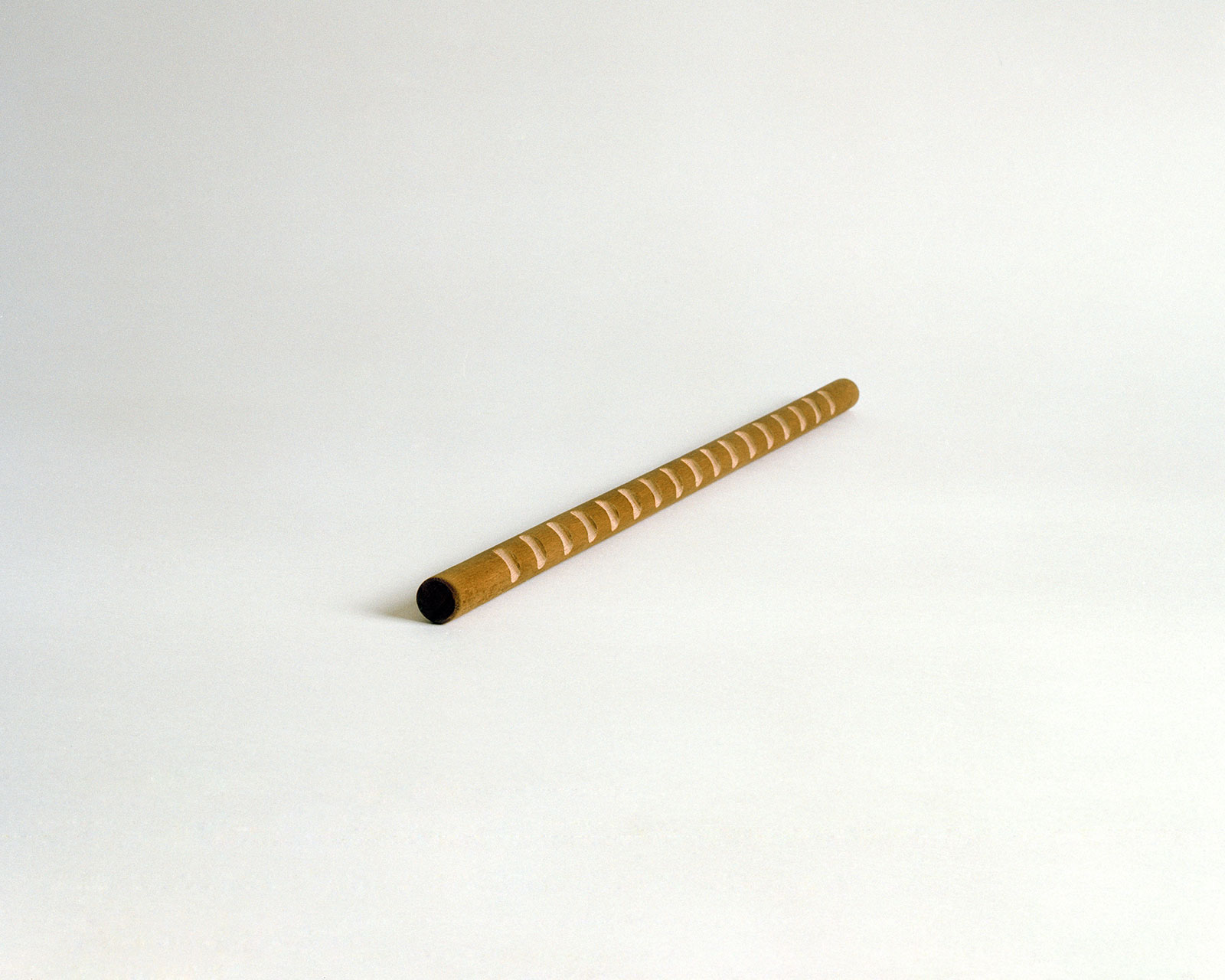
Aloïs Godinat’s artistic practice draws on art historical elements, effecting minimal changes to evoke new meanings and contexts. With Godinat the devil lies in the detail – both in his choice of colours, structures, textures, and in his treatment of the fragment, image or typography at hand.
Godinat’s contribution for the GAK annual editions, Bâtonnet, Bâtonnet, reflects the work of the artistic avant-garde of the 1970s and evokes the legacy of André Cadere’s Barres de Bois Ronde, Stanley Brouwn’s study of the standard metre and human units of measurement, and Walter de Marias The Broken Kilometer. But Godinat’s wooden “bâtonnets” (French for “small baton”) also bear a striking resemblance to musical instruments such as the flute and clarinet. Their regular notches and the serial title of the work – in 2007 Godinat created Bâtonnet, followed by Bâtonnet et table basse in 2010 – are variations on an artistic gesture that graces all of Godinat’s creations.